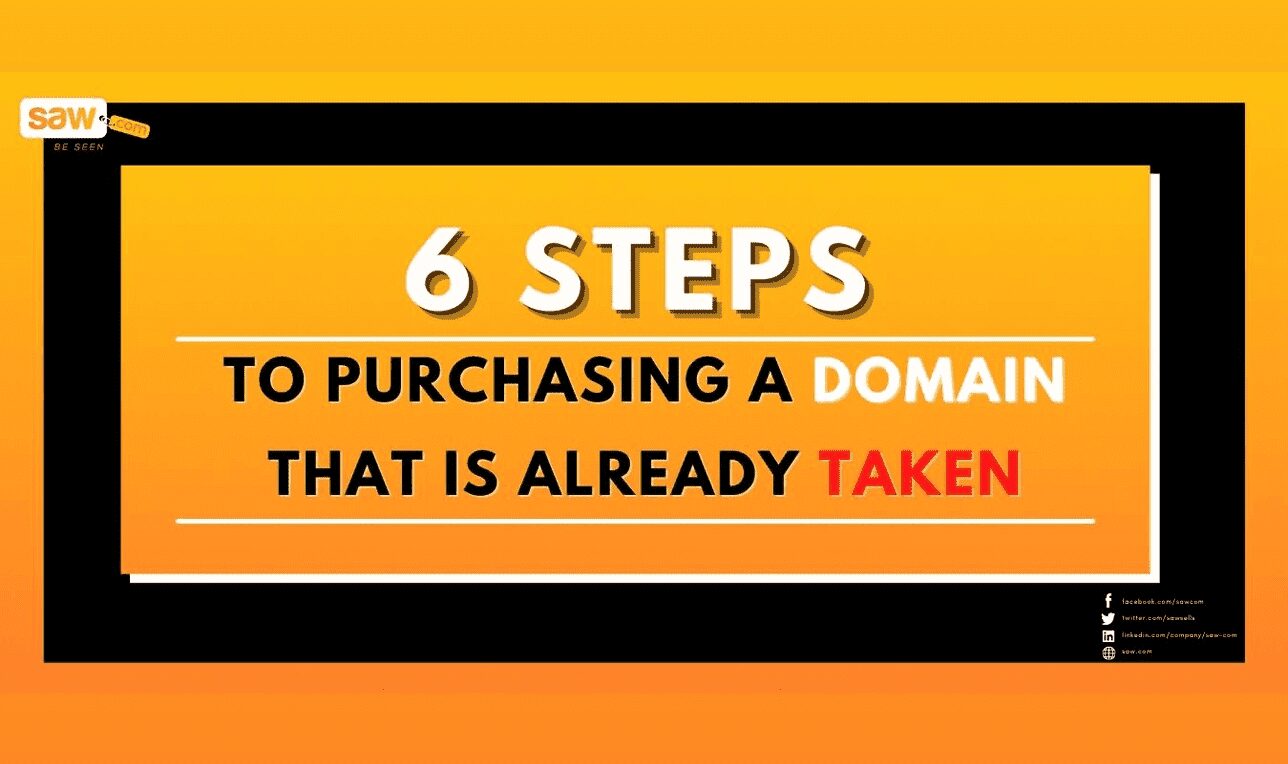You’re starting a business or undergoing a rebrand, and you’ve come up with the perfect domain name. Only problem? The domain is already registered. In this case, you have one of two options – you can either choose an alternative domain name, or you can fork up the cash to the current owner. If your heart is set on your first choice, this article will explain how you can go about buying the domain.
Step 0 – Beware of Buying the Same Domain with a Different TLD
one unfortunate occurrence I see all too often is when buyers decide to go with a different TLD of their first-choice domain. At first glance, this strategy makes sense. After all, it’s the same name and it’s much cheaper! Registrars will often suggest this option when you search for a .com domain that is already taken.
Let’s talk about why this is not a great option. First, if you simply use the same exact domain name with a different TLD, the owner of the .com may have legal grounds to sue for copyright infringement. Legal trouble is the last thing you want when starting out your business.
Second, Internet users typically enter .com at the end of the domain name when they type into the URL bar. This means if you decide to go with a .net or a .biz, users will end up at the .com and have a much harder time finding you.
All in all, it’s just a better decision to pay up for your first-choice domain, and if that doesn’t fit your budget, go with a different name altogether.
Step 1 – Visit the Domain to See How It’s Being Used
Visit the domain and check, first of all, if there is a website. Second, check to see whether it’s active or not. If it’s an active website, it’s going to be much harder to purchase the domain (if the owner is even willing to sell at all).
If it’s just a placeholder that’s not being used as a website, you’re in luck. The owner will likely be willing to sell, and it probably won’t be as expensive.
Step 2 – Find the Owner of the Domain
As touched on previously on our website, finding the owner of a domain can sometimes be a tricky process. The first step is to perform a WHOIS search, which provides some information about the domain, including:
- Registration date
- Who registered the domain
- When the domain expires
The issue with WHOIS searches is that many registrars offer low-cost services to keep registrants’ information private. Thus, many WHOIS searches yield no useful information for contacting the current owner.
If this is the case, you will have to do more sleuthing or get someone to do it for you, like the domain brokers at Saw.com.
Step 3 – Come Up with a Budget
Before contacting the owner and getting into a negotiation, you should first determine your budget. Specifically, come up with a number for the absolute highest offer you’d be willing to give. To make an informed decision on your budget, consider using an domain broker service. This way, you know you won’t be paying too much.
Nevertheless, it’s important to know the main metrics that contribute to the price of a domain:
- Length – Three and four-letter domains are typically the most expensive.
- Memorability and Spelling – Domains that are memorable and are easy to spell are typically worth more as they are more brandable.
- Age – Generally, the longer a domain has been registered, the more it will cost.
- Industry – Domains with popular-industry keywords are more valuable as they tend to rank higher on search engines.
- Universality – A domain name that could be applied to many businesses in many places than industry or region-specific names.
- Similar domains – Look at names in the same industry with other similar metrics, and see how much they have sold for.
Once you have appraised your domain and have come up with your budget, you’re ready to negotiate. Remember to keep notes on the appraisal, as it will help you when you enter the negotiation step.
Step 4 – Contact the Owner
At this point, you can either contact the owner directly via email (that you found via WHOIS) or use a domain broker service such as Saw.com to reach out to the owner on your behalf.
If you reach out directly, simply explain who you are, why you want to purchase the domain, and your initial offer.
If you choose to use a service, they will handle the whole negotiation process on your behalf. All you have to do is sit back and relax. Also, domain owners may be more comfortable selling with a professional domain brokerage, like Saw.com.[/vc_column_text][vc_column_text]
Step 5 – Negotiate
If you decide to go this step alone, know that you’ll have to negotiate all the terms of purchase, including the final price, the domain transfer process, escrow, and any laws that may apply. This can be a complicated process, so you may want to consider hiring an attorney to make sure you’re protected and have all your I’s dotted and T’s crossed.
On the other hand, if you choose a domain brokerage service, you won’t have to worry about any issues. At Saw.com, we handle the transfer process, make sure the transaction is safe with escrow, and keep you informed every step of the way.
What if All Else Fails?
If you have any missteps throughout the above process, and for whatever reason cannot acquire the domain, you have other options.
You can simply choose an alternative domain. It may not be optimal, but sometimes we can’t always get exactly what we want. Also, who knows how long it may take to convince the owner to sell or wait for the domain to expire. Time is money, so consider choosing an alternative. There are still many premium domains available for purchase.

